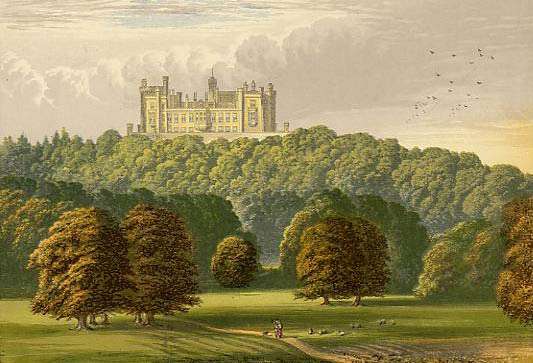A new cricket pavilion and coaching school are to be built on the Grade II* Capability Brown landscape at Belvoir Castle despite concerns about their impact on views of this important historic landscape. The development was supported by the local community as it will provide much-needed facilities. However, the Gardens Trust, Parish Council and landscape historians opposed the current plans because of their scale compared to the buildings they will replace. This scheme shows the potential conflicts that can arise in balancing the protection of the historic landscape with the needs of local residents.
Cricket pavilion and school at Belvoir
The scheme aims to replace an existing cricket pavilion at Belvoir Castle, which is in poor condition and lacks changing facilities. This means that unsightly Portacabins and Portaloos have to be used on the site. The new plans will not only provide an up-to-date pavilion with facilities for the disabled but also an indoor cricket coaching building for wet weather use and for other sports groups (this Melton Times news piece shows artist’s impressions and a plan of the proposals).
However, the scale and position of the development means that it would affect key views of Belvoir Castle at Knipton, which is one of the area’s most important historic landscapes. Some amendments were made to the scheme, but these did not address our concerns. The proposal remains over 25% higher than the existing pavilion. The Gardens Trust and Capability Brown expert Steffie Shields opposed the scheme on the following grounds:
- The indoor cricket school has a large flat roof, like that of a warehouse, which would look incongruous in the foreground of one of the best and most memorable views of Belvoir Castle and Park from Knipton Lane.
- It would spoil views of new landscape features created to mark the 2016 Capability Brown Tercentenary. These include trout pools beyond the cricket field and a sweeping park plantation designed by Alan Titchmarsh above on Harston Hill.
- Although the pavilion is in appropriate materials, those used for the cricket school do not relate to any building within or on the boundaries of the park. This is in contrast to previous additions to the site, such as the C19th kennels by James Wyatt.
- The proposals do not show any appreciation or understanding of the significance of historic, architectural and aesthetic aspects of the site.
- No attempt has been made to move the car park, or indeed the coaching building, so that it would be less intrusive on the views of the historic park.
Far from being of minimal harm this development would distract from and degrade the Grade II* registered historic park. In support of the significance of views of Belvoir, Steffie Shields quoted Dame Sylvia Crowe, who said:
‘most important of all is to realise that while physical access must be limited to the particular uses for which every piece of land is designated, visual access is also part of recreation and to that every use can be made to contribute’
Historic England also expressed concerned about the scale and design of the cricket school building and considered that it ‘would cause harm to the significance of the Grade II* RPG [Registered Park]’. They had questioned whether an alternative, less sensitive site could be found but were told that this was not possible. Therefore the local authority had to decide whether the public benefits of providing the facilities in this location outweighed the harm caused to the historic landscape.
Plans to go ahead
The Gardens Trust recognises the need for better cricket training facilities for local young people at Belvoir but regrets that the scheme was not amended to take these concerns into account. Belvoir is a nationally significant landscape, for which ‘Capability’ Brown designed one of his last great, holistic landscape plans. It is regrettable that the new cricket pavilion and school will be provided at the expense of harming its picturesque setting, in the foreground of one of the principal views of Belvoir Castle and Park. Moreover, the granting of planning permission for a building of this scale could set an unwelcome precedent for future proposals encroaching on views of the park.
Illustration: Belvoir Castle, Morris’s Country Seats (1880)



